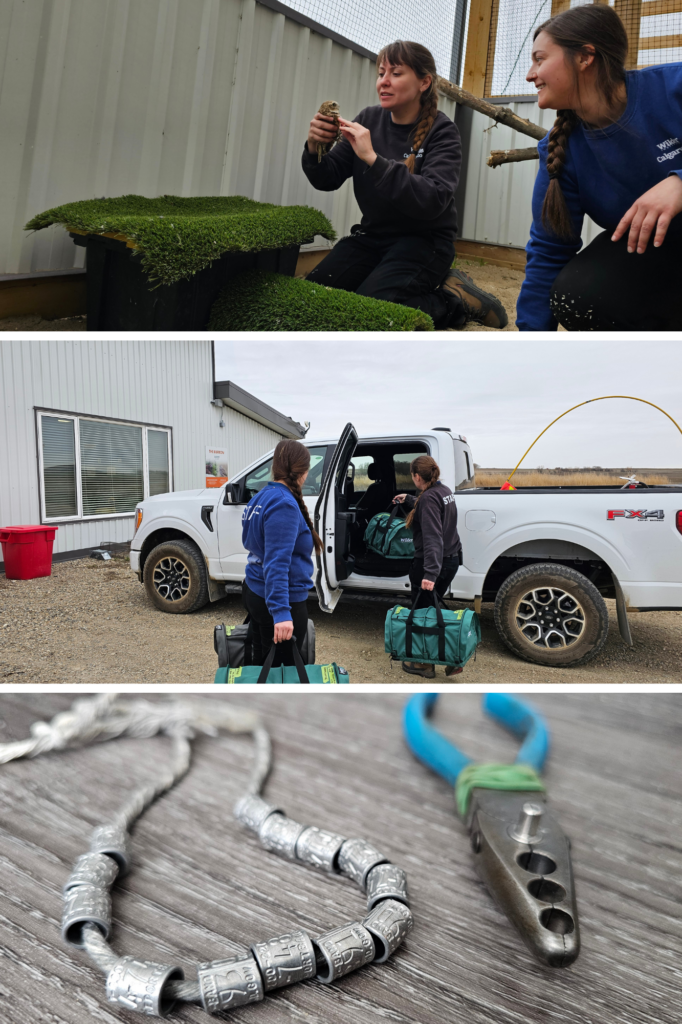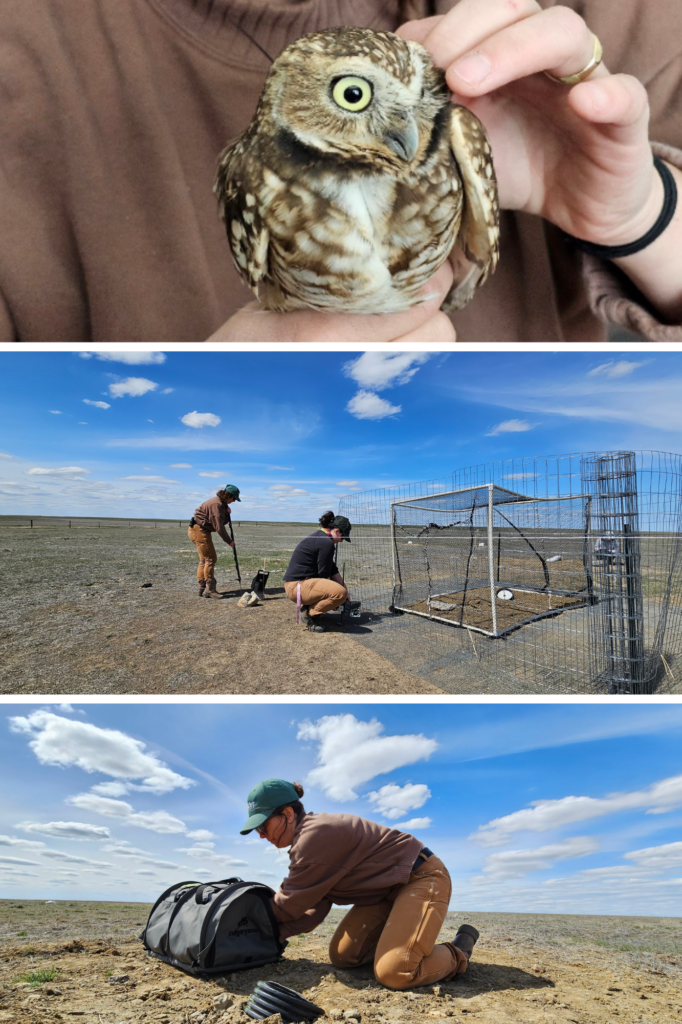Returning to the Prairie: Exploring Our Burrowing Owl Head-start Program
May 28, 2024
The Wilder Institute collaborates with partners and landowners to support the recovery of the Endangered burrowing owl on our beloved Canadian prairies through our head-starting program. ‘Head-starting’ is a conservation technique that involves taking the youngest owls, which are least likely to survive, from the wild into human care to nurture them through the winter and releasing them the following spring when they stand a better chance at survival. The ongoing support of our donors is crucial in sustaining and advancing this vital program. With burrowing owls distributed in less than one-third of their historical range in Canada, conservation efforts are urgently needed for this small grassland owl.
This spring, the 145th burrowing owl of our head-starting program took its first steps back onto Canada’s prairies after being under expert care at our offsite conservation facility, the Archibald Biodiversity Centre (ABC) over winter. One hundred and forty-five marks a big milestone, one that would not be possible without our donors’ generous contributions!
The release process takes place over three days, with a different cohort being released each day. Early on release day, the Animal Care, Health & Welfare team at the ABC carefully prepare the burrowing owls scheduled for release by placing them—in their designated pairs— safely into transport carriers.

Top photo: Members of the Wilder Institute’s Animal Care, Health & Welfare team prepping the head-started owls for transport. Middle photo: Animal Care, Health & Welfare team loading head-started owls for transport. Bottom photo: Using special banding pliers, owls are equipped with a band so the bird can be more easily identified and monitored.
After a two-and-a-half-hour drive, the owls arrive at the field house where the team confirms each owl’s ID, checks to make sure their transmitters are still fitting properly and gives them a band with alpha-numeric characters that can be read from a distance. This allows the owl to be identified using binoculars or a spotting scope, making them easier to identify without having them in hand.
The pair of owls is then taken to their individual release site, where they will be released into artificial nest burrows with a temporary enclosure over the top. This is known as a soft release approach, protecting the owls from predators and giving them a chance to acclimate to their new wild home. During this release period, food is provided, and the owls are monitored using remote cameras. Once the pair begins laying eggs, typically 1-2 weeks post-release, the enclosures are removed, marking their true return to the prairie habitat.
With the generous support of our donors, our aim is to increase the population of burrowing owls on the Canadian prairies, enriching biodiversity for generations to come and securing a promising future for this remarkable species. We are deeply thankful for our supporter’s dedication to ensuring that all species we share this world with, like the burrowing owl, remain a part of this vibrant landscape we all love!

Top photo: Ensuring the satellite transmitter is fitted properly. Middle photo: Adjusting the soft release enclosure which protects the owls while they get used to their new wild home. Bottom photo: The burrowing owl inside this carrier will be placed in the artificial burrow and when egg laying begins, the soft release enclosure will be removed.
